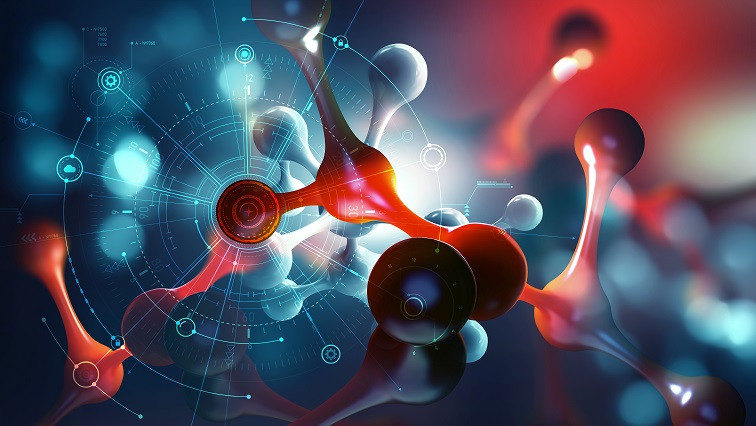Kaydence partners with the CSH to drive innovative solutions in education and healthcare.
The role of nanotechnology in medical advancements
Nanotechnology is transforming modern medicine by enabling precise drug delivery, advanced diagnostics, regenerative treatments, and nanorobotic surgeries. This blog explores how nanoscale innovations are improving cancer treatment, medical imaging, wound healing, and antimicrobial applications, while also addressing the benefits and challenges of nanomedicine. Discover how nanotechnology is revolutionizing healthcare, enhancing patient outcomes, and shaping the future of medical advancements.
RESEARCH
2/8/20252 min read


Nanotechnology, the science of manipulating matter at the nanoscale (one billionth of a meter), is revolutionizing the field of medicine. By leveraging nanoparticles and nanodevices, researchers and medical professionals are developing cutting-edge solutions for disease diagnosis, targeted drug delivery, regenerative medicine, and even nanorobotics for surgery. This blog explores how nanotechnology is shaping the future of healthcare, improving treatment outcomes, and offering hope for previously untreatable conditions.
Applications of Nanotechnology in Medicine
1. Targeted Drug Delivery
One of the most promising applications of nanotechnology in medicine is targeted drug delivery. Nanoparticles can be engineered to deliver medication directly to diseased cells, minimizing side effects and improving treatment effectiveness. For example:
Cancer Treatment: Nanocarriers deliver chemotherapy drugs directly to cancer cells, reducing damage to healthy tissues.
Neurological Disorders: Nanoparticles cross the blood-brain barrier to treat conditions like Alzheimer's and Parkinson’s disease.
Antimicrobial Therapy: Nanomaterials enhance the effectiveness of antibiotics against resistant bacteria.
2. Advanced Diagnostics & Imaging
Nanotechnology enhances medical imaging and diagnostics, allowing for earlier and more accurate disease detection. Key advancements include:
Quantum Dots & Nanoprobes: Fluorescent nanomaterials improve the accuracy of imaging techniques like MRI and CT scans.
Biosensors: Nanosensors detect biomarkers for diseases like cancer and diabetes at an early stage.
Lab-on-a-Chip Devices: Miniaturized diagnostic tools analyze patient samples quickly and efficiently.
3. Regenerative Medicine & Tissue Engineering
Nanotechnology is playing a vital role in tissue engineering and regenerative medicine by developing biomaterials that promote cell growth and repair. Examples include:
Nanoscaffolds: Support tissue regeneration in burn victims, bone fractures, and organ repair.
Stem Cell Therapy: Nanoparticles enhance the differentiation and growth of stem cells for regenerative treatments.
3D Bioprinting with Nanomaterials: Enables the creation of artificial organs and tissues.
4. Nanorobotics in Surgery
Nanorobots are tiny robotic systems designed to perform highly precise medical procedures at the cellular level. Potential applications include:
Minimally Invasive Surgery: Nanorobots navigate through the bloodstream to deliver drugs or repair tissues.
Cancer Cell Destruction: Nanorobots equipped with targeted therapies attack only malignant cells.
Blood Clot Removal: Nanodevices break down clots to prevent strokes and heart attacks.
5. Antimicrobial Nanocoatings & Wound Healing
Nanotechnology-based materials are being used in antimicrobial coatings and wound healing applications. Key advancements include:
Silver Nanoparticles: Used in wound dressings and medical implants to prevent infections.
Self-Cleaning Surfaces: Nanocoatings on hospital equipment reduce the spread of bacteria.
Smart Bandages: Deliver real-time data on wound healing and release medication as needed.
Benefits & Challenges of Nanotechnology in Medicine
Benefits:
✅ Higher Treatment Precision: Targeted therapies reduce side effects and improve efficacy.
✅ Early Disease Detection: Nanosensors enable faster and more accurate diagnosis.
✅ Faster Healing & Regeneration: Nanomaterials promote tissue repair and cell growth.
✅ Reduced Invasiveness: Nanorobotics enable non-invasive and minimally invasive treatments.
Challenges:
⚠ High Development Costs: Research and production of nanomedicine remain expensive.
⚠ Long-Term Safety Concerns: The impact of nanoparticles on human health and the environment requires further study.
⚠ Regulatory Approvals: The complexity of nanomedicine poses challenges for legal and ethical approvals.
Conclusion
Nanotechnology is redefining the future of medicine, offering groundbreaking advancements in diagnosis, treatment, and surgery. While challenges remain, continued research and innovation in nanomedicine have the potential to revolutionize healthcare, enhance patient outcomes, and provide cures for previously untreatable diseases. As the field evolves, nanotechnology will become an essential component of modern medicine, improving lives worldwide.
Kaydence Consultancy
Global platform for study abroad solutions, marketing strategy and your efficient research partner
Contact
Get in touch
director@kaydenceconsultancy.com
+9188916082
© 2025 Kaydence Consultancy. All rights reserved.
Designed with care | Powered by Innovation
Navigation
Company
Career
Legal
M G Road, Kochi, Kerala, India
